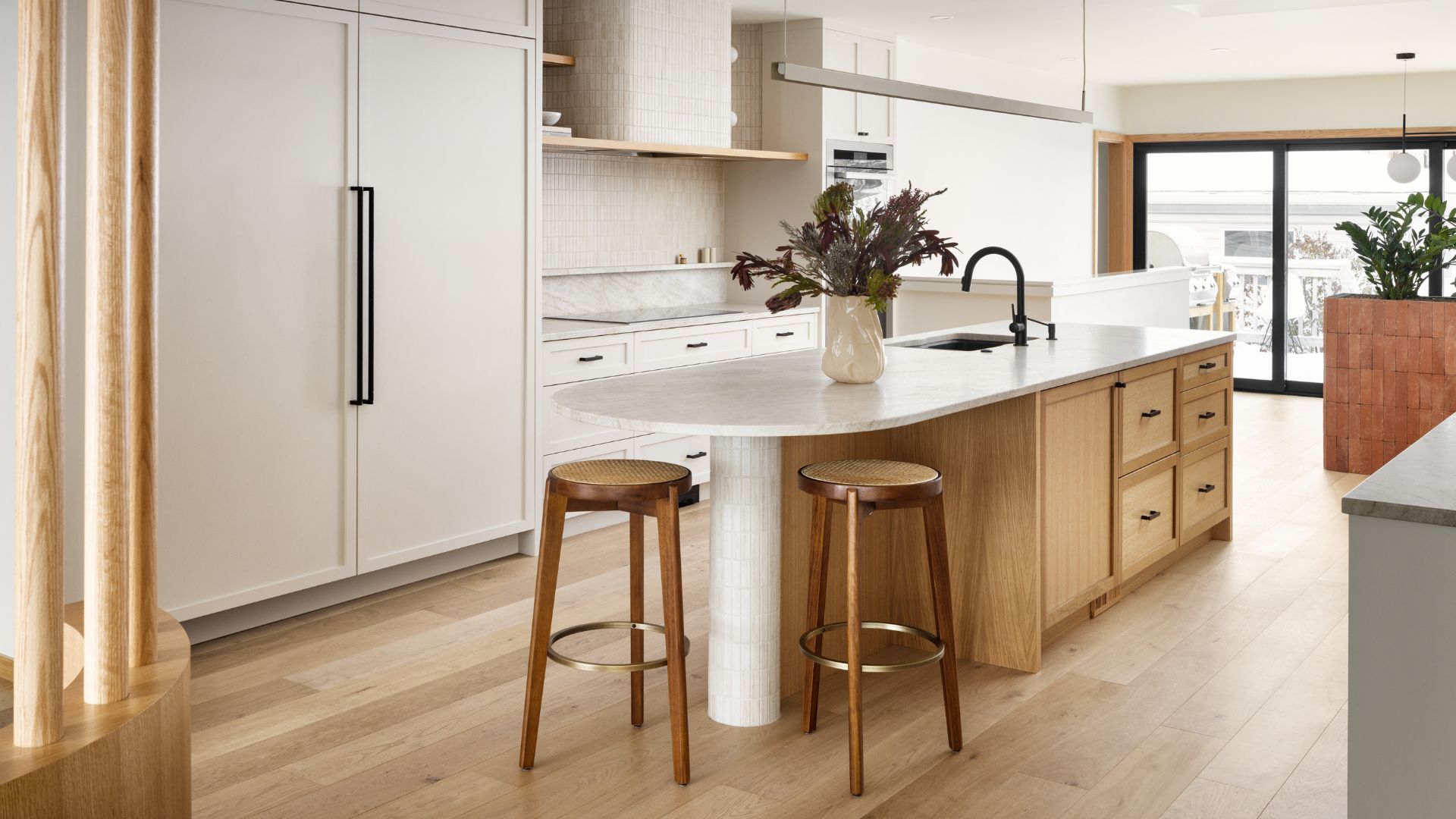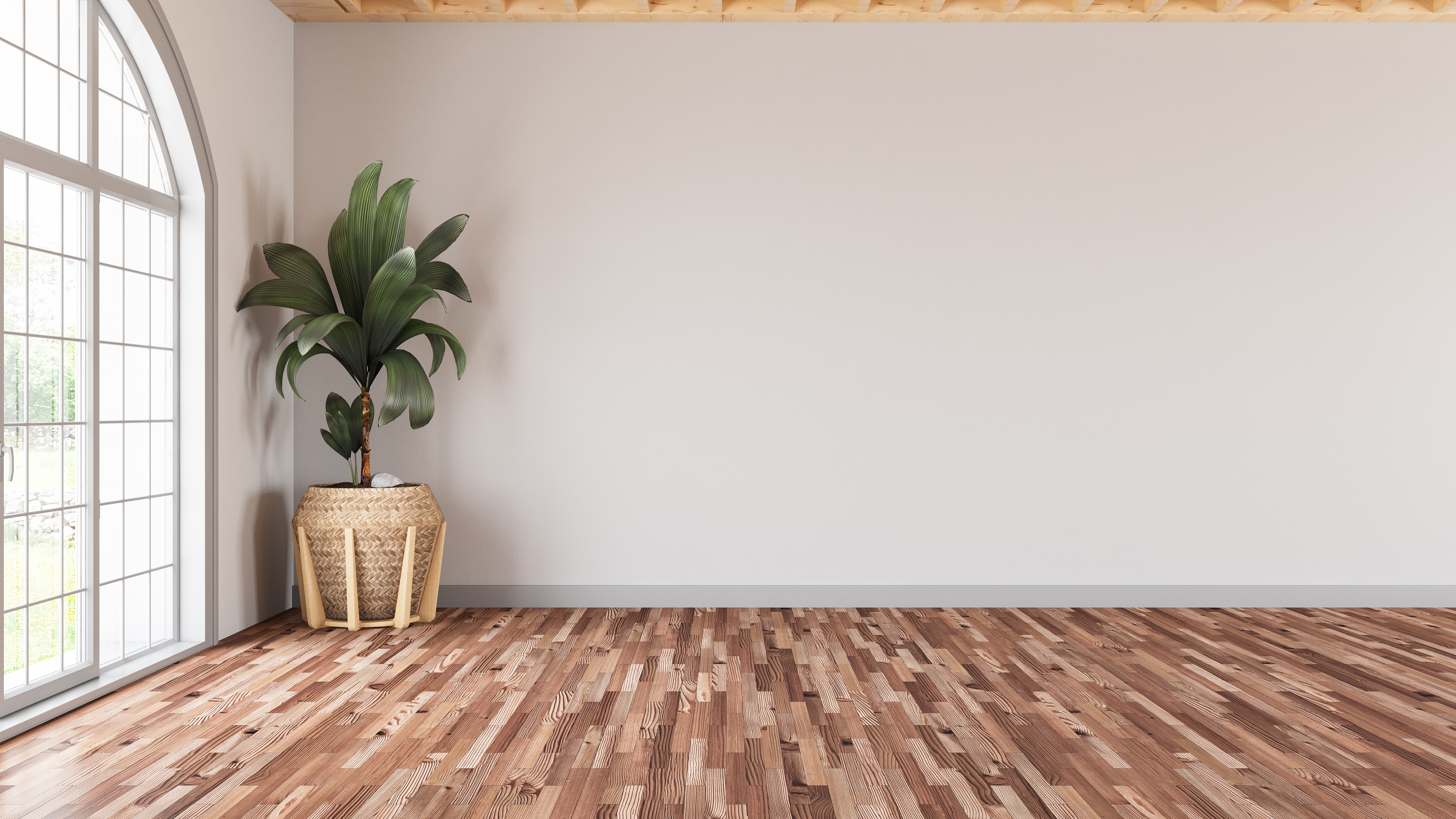
Knowing how to clean hardwood floors is a must, especially if you've had a busy season of guests around the home. Oftentimes hardwood flooring can be prone to scuff marks and maybe even a few scratches — which is why you'll need to find an easy solution to get your floors looking as good as new.
Aside from your flooring looking a little tired and rough, wooden flooring can be prone to gathering lots of dust, which is why cleaning your flooring (correctly) is key. "Hardwood flooring can be expensive, so maintaining and cleaning hardwood floors will help them last longer," says Ken Doty, Cleaning Expert and Chief Operating Officer at The Maids. "Cleaning regularly will keep them looking beautiful and can greatly reduce wear and tear from dust and dirt. Cleaning your hardwood floors will also protect your family and guests from any germs and grime that accumulate over time."
Now, let's get to work shall we? Here is everything you need to know about cleaning your wood flooring.
What You'll Need

There are many wood floor types out there, but there are many things they have in common. First, they're natural materials that need maintaining and second, they need to be cleaned with the right tools and in the right way! According to cleaning expert, Taylor Riley and Founder at Boom. Facility Service Advisors, you'll need these materials to clean your hardwood floors.
TOOLS:
• Soft-bristle broom or microfiber dust mop: Taylor says this is for sweeping up dust and debris without scratching the surface.
• Vacuum cleaner with a hardwood floor attachment: "To remove dirt and dust from the floor's crevices; make sure it has a soft brush or setting to avoid scratches," he adds.
• Microfiber mop or cloth: The expert says this is ideal for damp cleaning without leaving excess moisture on the floor.
• Spray bottle: "To lightly mist the cleaner onto the floor for even distribution."
• pH-neutral hardwood floor cleaner: This is specifically formulated to clean without damaging the wood or finish.
• Soft, dry cloth: Last but not least, a soft cloth for "drying the floor after cleaning, especially if there’s any excess moisture."
How to Clean Hardwood Floors

Now that you have the necessary tools to clean, it's time to revive your wood floor color and get it looking as good as new.
Here are six simple steps you can follow to get squeaky clean floors — according to cleaning experts.
A Step-by-Step Guide
Whether you're dealing with oak or maple wood, there are a few hardwood flooring types which are quite durable and easy to clean. So grab your tools and let's get to cleaning.
Cleaning expert Taylor says you should follow these simple steps to get your hardwood flooring looking brand new.
Step 1 - Taylor says you need to begin by removing dust and debris. To do this, start by "sweeping the floor with a soft-bristle broom or a microfiber dust mop to remove loose dirt and dust. Alternatively, use a vacuum cleaner with a hardwood floor attachment, making sure to avoid any hard plastic or beater bars that could scratch the wood."
Step 2 - Next up prepare the cleaner: Taylor adds: "If using a commercial hardwood floor cleaner, pour it into a spray bottle or follow the manufacturer's instructions. For homemade solutions, mix a small amount of mild dish soap with water."
Step 3 - Lightly mist the floor. For this "spray the hardwood-specific cleaner lightly over a small section of the floor, or dampen your microfiber mop with the solution," Taylor explains. "Avoid soaking the floor, as water is the enemy of hardwood."
Step 4 - Mop in the direction of the grain. You can "use a microfiber mop or cloth to wipe the floor, following the direction of the wood grain. This technique helps avoid streaks and ensures an even clean," Taylor adds.
Step 5 - Dry the floor. Once you have cleaned, Taylor recommends you use a soft, dry cloth to wipe up any excess moisture and ensure the floor is completely dry. This step will prevent water damage and streaking, according to the expert.
Step 6 - Last but not least, "polish sparingly! If needed, apply a small amount of hardwood floor polish after cleaning. Make sure to follow the manufacturer’s guidelines and avoid overuse to prevent buildup."
Must Have Cleaning Products
Price: $25.27 at Walmart
Includes: Spray Mop, 5 Mopping Pads, 1 Floor Cleaner Liquid Solution
Price: $14.49 at Target
Dimensions (Overall): 26.77 Inches (H) x 5.12 Inches (W) x 2.64 Inches (D)
Price: $13.72 Was: $14.44 at Amazon
Amount: 32 Count
How Often Should We Clean Hardwood Flooring?

When it comes to carpet vs hardwood flooring, it is clear that hardwood may be a little easier to tackle and clean — but how often should you be cleaning hardwood flooring to keep it in tip top condition?
Well, Taylor says you can create a schedule to help you clean and maintain the health of your flooring. The expert suggests:
Daily or Every Few Days: "Sweep or dust mop to remove dust and debris that could scratch the floor," he says.
Weekly: For a weekly routine, ensure you "vacuum with a soft-brush attachment and damp mop with a hardwood-specific cleaner."
Monthly: "Consider a deeper clean, using a slightly more intensive hardwood cleaner and possibly a polish if needed," Taylor notes.
As Needed: Remember to "spot clean spills immediately to prevent staining and water damage."
Types of Hardwood Flooring and Their Cleaning Differences

What is the most durable type of flooring and how should these be cleaned? Taylor gives us a breakdown of the different types of hardwood flooring.
Solid Hardwood: The expert says these floors are made of solid wood planks. He adds: "They can typically handle regular hardwood cleaners but are more susceptible to moisture, so damp mopping is essential."
Engineered Hardwood: "This is made of a thin layer of hardwood bonded over a plywood base, these floors are more moisture-resistant but should still be cleaned using minimal water," the expert shares.
Unfinished or Waxed Hardwood: These are known to be the most delicate and require special care. Taylor says "avoid water-based cleaners and use wax-based cleaners designed for these specific finishes."
Laminate (Wood-Look): "Not true hardwood but often confused with it," the expert explains. "Clean with products specifically designed for laminate to avoid damaging the top layers."
FAQS
What products should we avoid when we clean hardwood flooring?
Ken Doty, Cleaning Expert and Chief Operating Officer at The Maids says the products which should be avoided is: "Anything that isn't pH-neutral or aren't designed for your flooring. Know your type of hardwood and its finish, and the manufacturer's suggested cleaning recommendations."
Ken continues: "Some synthetic floors can look more natural than they are. Natural cleaners such as white vinegar, lemon juice and baking soda aren't safe for hardwood floors. Same for moisture, never steam clean hardwood floors or use too much water with your wood floor cleaner. Oils, waxes, furniture sprays and anything with ammonia should be avoided."
Home remedies for cleaning hardwood flooring
If you're looking for more affordable ways of cleaning your hardwood floors, Ken says "you can find the tools needed to clean your hardwood floors in your household."
He says all you need is a spray bottle, four cups of distilled water, one teaspoon of pure castile soap, lemon juice or your preferred essential oil.
"Mix the water, castile soap, and your choice of fragrance in the spray bottle," explains Ken. "Shake the cleaning solution vigorously, grab your mop, and you’re ready to go. If your home has a lot of hardwood floors, you can adjust the recipe and use a bucket of water."







